Since 2009, the Royal Observatory of Belgium (ROB) cooperates with the Indonesian Center for Volcanology and Geological Hazard Mitigation (CVGHM) to develop modern methods in seismic monitoring of volcanoes (Camelbeeck et al., 2013 [1]). The volcano-seismology research axis started within the Seismology-Gravimetry section with two PhD theses and is an active research axis within the section, in collaboration with numerous international partners. In this framework, two PhD-theses have been completed in 2013 in cooperation with Prof Alain Bernard of the Université Libre de Bruxelles (ULB). The first PhD of Dr Devy Syahbana intended to develop monitoring methods of volcanic activity from the recordings of a single broad-band seismic station installed on the Papandayan volcano. Its objective was to evaluate if volcano-monitoring can be efficient and hence applicable at low costs on the numerous other Indonesian volcanoes for which only analogue instruments with paper recordings are available. The second PhD project, by Dr. Corentin Caudron, concerned a detailed study of the volcanic activity of the Kawah Ijen, one of the volcanoes on Java, by using ambient seismic noise measurements and seismicity recorded by a dense network of seismic stations. At time of writing (May 2016), we (co-)authored more than 10 volcano-related peer-reviewed publications.
Seismic instrumentation
The ROB is responsible for monitoring the seismic activity in Belgium since the installation of the first seismic station in Uccle in 1898. Since then, the ROB staff, technicians, engineers and scientists have built an excellence in constructing and/or using seismic sensors, acquisition systems and IT infrastructure. In collaboration with the CVGHM staff on the field, this excellence allowed to install one permanent broadband seismic station (Güralp CMG-3ESPCD) on the Papandayan volcano and three broadband stations (Nanometrics Trillium 120P) on the Kawah Ijen volcano. Installing the seismometers in 1 meter deep concrete vaults ensures a good isolation from temperature and rain effects. Even though the PhD projects were of finite duration (4 years), the installed stations built by Corentin & Devy and with the help of the local authorities/collaborators followed international standards for permanent seismic stations in order to be used as long-term reference stations.
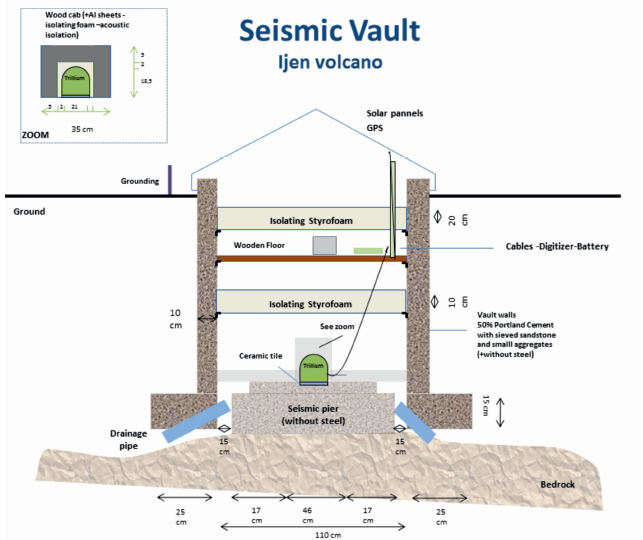
Figure 1: State of the Art seismic vault as built by ROB on the Kawah Ijen and Papandayan volcanoes, Java Island, Indonesia.
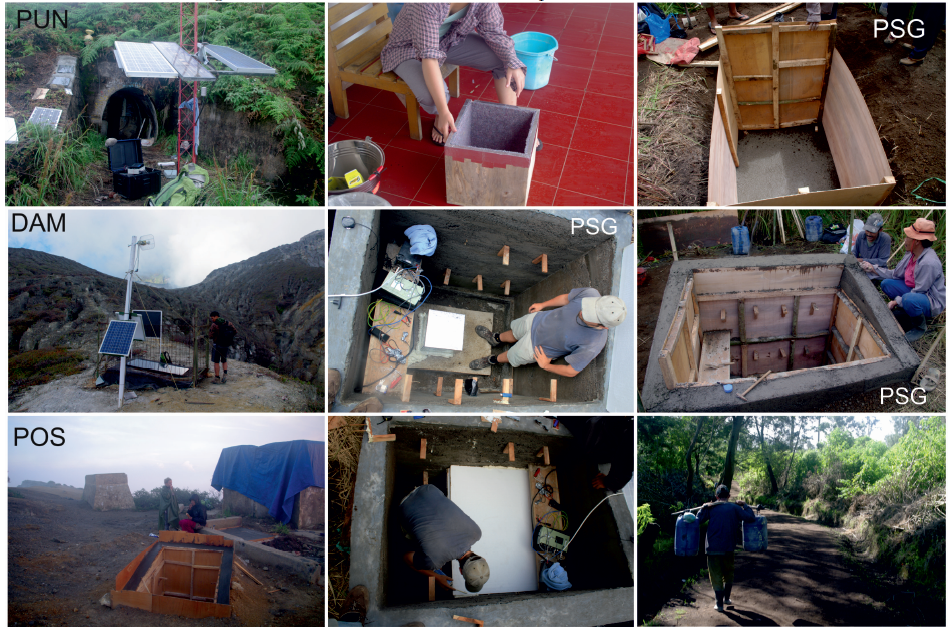
Figure 2: Installation of the different broadband seismic stations on the Kawah Ijen volcano, Java Island, Indonesia.
Seismic monitoring
Seismic activity – "Event-based" seismology
Volcano monitoring traditionally starts with detecting, identifying, locating and classifying seismic events. These events can be classified as, for example, "Volcanic A" (shallow volcano-tectonic event), "Volcanic B" (deep volcano tectonic event), "Tectonic", "Distant Tectonic", "Long Period", "Monochromatic", "Rockfall", etc. (Caudron et al., 2015 [3]). The classification of these events is based on the observer’s or scientist’s experience and also on different parameters or features of the seismic record. Differences between event types are present in their duration, the time difference between the arrivals of two different types of wave trains, their frequency content or the way energy is released in the coda (tail) of the event.
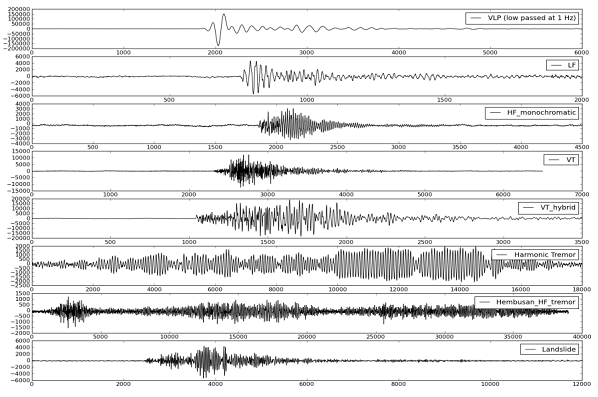
Figure 3: Different type of "seismic events" measured on volcanoes.
Locating events usually requires quite a large number of stations, which is a difficult and costly task on volcanoes. For locating the events on the Papandayan, D. Syahbana could benefit from the seismic network installed in the vicinity of the volcano by the Deutsche GeoForschungsZentrum (GFZ). At Kawah Ijen, C. Caudron could use the data from the newly installed Volcanic Disaster Aid Program (USGS-VDAP) stations and four temporary "transportable" ROB seismic stations.
Up to now, particularly the long period (LP) events of the Papandayan unrest in 2011 have been studied and located. A thorough study of these events showed that their very peculiar frequency content allows to understand three states of fluids within the volcano: namely water, water foam and misty gas (Syahbana et al., 2014 [6]). This is an important finding in Volcano-Seismology monitoring of "wet volcanoes", i.e. volcanoes considered to be among the most dangerous ones because of their explosive phreatomagmatic type of eruptions.
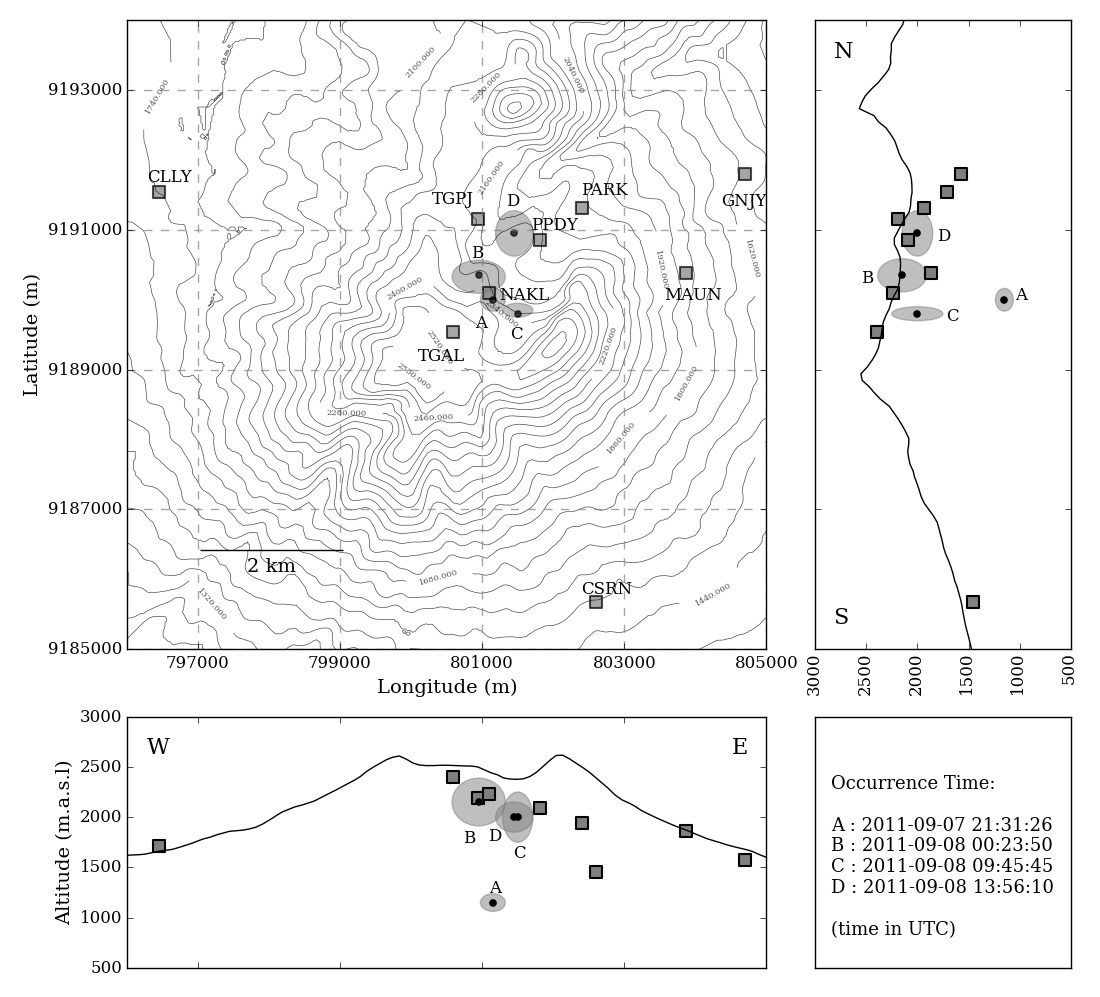
Figure 4: Location of the long period (LP) events of the 2011 crisis of the Papandayan volcano.
On the Kawah Ijen volcano, a specific focus has been set on the events preceding the 2011-2012 unrest of the volcano (Caudron et al., 2015 [2]). During that period, 237 earthquakes were locatable using all available seismic stations. Most of the events occurred at a depth of 1 km below the crater lake. Some events occurred further away in or outside of the Ijen Caldera. These events are important in the dynamic triggering of the activity of volcanoes, i.e. the chain reaction between an event and the state change of the volcanic system and is now an active area of research worldwide.

Figure 5: Location of the volcano-tectonic and tectonic events during the 2011-2012 crisis of the Kawah Ijen volcano.
Noise-based monitoring
Apart from the traditional "event-based" seismology, it is known for 10 years that changes in medium can be evidenced using continuous records of "seismic noise". The application of ambient seismic noise cross-correlation, or interferometry, has been proven to provide precursory signals to eruptions. The application of this technique on the broadband data from the Kawah Ijen yielded results that we relate to phases in the unrest (Caudron et al., 2015 [2]).
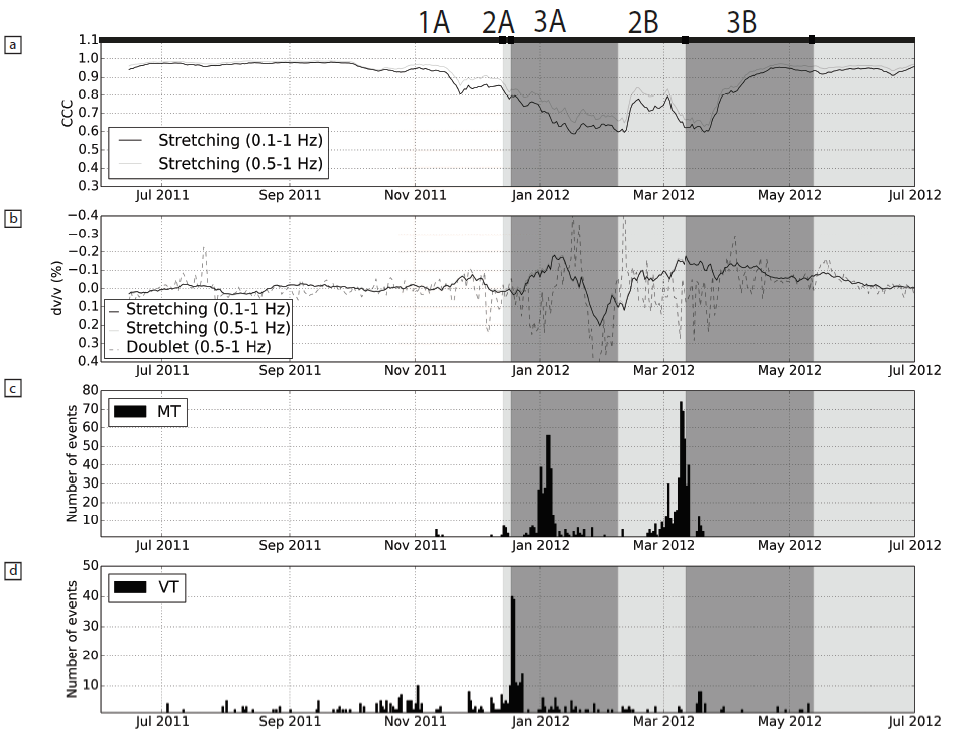
Figure 6: Comparison of decorrelation (a), relative velocity variation (b), tremor event rate (c) and volcano tectonic event rate (d) during the 2011-2012 Kawah Ijen crisis.
The developments made during C. Caudron's PhD thesis, based on original work from Dr. Florent Brenguier (ISTerre, Grenoble, France), lead to the publication of MSNoise (Lecocq et al., 2014 [4]), a Free and Open Source Software package for monitoring relative seismic velocity changes (dv/v). Since 2014, MSNoise is installed at the Observatory of the Piton de la Fournaise volcano (OVPF, La Réunion, France) and runs every night to compute the dv/v between all station pairs on this volcano. The output of this unique software package is a dv/v time series that is used in routine by OVPF staff and helped interpreting the unrests leading to the 5 eruptions that occurred since June 2014.
Collaborations
- CVGHM – Indonesia
- ISTerre – France
- GFZ – Germany
- USGS-VDAP – United States of America
- EOS – Singapore
- OVPF-IPGP – France
- University of Luxembourg
- ULB – Belgium
- VUB – Belgium
Training
- Dr. C. Caudron completed his PhD in 2013 at the ROB and ULB, then moved for 2 years as post-doc at EOS (Singapore) and is now post-doc in Cambridge (United Kingdom).
- Dr. D. Syahbana completed his PhD at the ROB and ULB in 2013, then moved for 6 months at GFZ (Germany) and is since then back at CVGHM (Indonesia) where he is chief of the Eastern Volcanoes section (all Indonesian volcanoes "East of the Bali Sea, i.e. the limit between Java and Bali").
- Raphael De Plaen started his PhD in 2015 at the University of Luxemburg in close collaboration with Dr. Thomas Lecocq (ROB). His work is in the continuation of the previous projects, specifically looking at the maximum exploitation of continuous data from a single seismometer on volcanoes.
- Since 2010, volcano-seismology was also the focus of four Master theses:
- In 2011, Zack Spica (ULB) did HVSR measurements on the Kawah Ijen and deduced the horizontal layering of the volcano flanks. Eventually, Zack did a PhD in volcano-seismology at UNAM (Mexico) and authored a publication on the shallow velocity structure of the Ijen Caldera using ambient seismic noise (Spica et al., 2015 [5]).
- In 2013, Geoffrey Van Kriekinge (ULB) had the difficult task to be the first to try locating the 2011-2012 seismic events on Kawah Ijen.
- In 2015, Lauriane Meyer (ULB) studied the long term behaviour of HVSR amplitude and resonance frequency and their potential for being used as a monitoring tool.
- In 2015 too, Morgane Draps (VUB) looked at the geomorphological lineaments using satellite imagery of the Kawah Ijen volcano and caldera.
